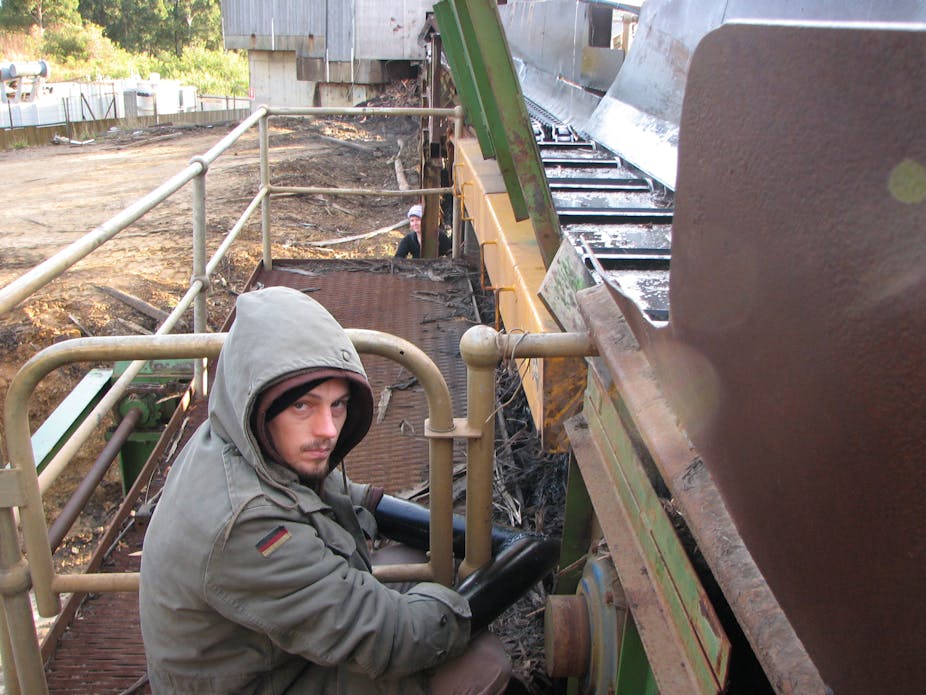Australians are rightly proud of their democratic traditions. They are also inclined to raise their voice in protest when faced with government, bureaucratic, or civil injustice. Environmental activists have been particularly noisy. But community activism can have unforeseen consequences, resulting in worse outcomes for the environment in the long run.
The success or failure of local environmental campaigns is rarely addressed. Reportage is usually centred around heated encounters between protesters, police and those seeking to enforce development or change.
What happens after the cameras have gone, when the final decisions come down, the bulldozers move in and people go back to their regular lives? This is not often discussed.
Protesting can leave individuals on both sides battered and bruised. The physical, financial and emotional toll is considerable. It can leave one asking “What was the point?”
To outsiders these campaigns may appear as failures and a waste of time. Of course the reality is very different. Is it a failure if there was no chance of winning to begin with?
The outcome of any conflict is contingent on the rules, the resources available to the parties and their determination. In many environmental battles the rules favour the land owner/developer/organisation seeking to effect change and destroy or seriously degrade the environment. Resources are also usually on the side of those parties; whether it be financial or otherwise. The determination to win is equally shared.
Measuring success is subjective. When senior executives of the Western Australian Environmental Protection Agency were excluded from involvement with the James Price Point decision due to conflicts of interest, it was most likely due to the exposure arising from an active community campaign against the development. This could be seen as a win for the community, even though it had little effect on the ultimate outcome.
Historic campaigns such as the fight to save the Franklin River in Tasmania set the template for community activism during the late 1970s. Little has changed in the intervening years. Reactive, locally driven protests with regional, national or international support spring up regularly.
The Sandon Point residential development on the coast north of Wollongong in New South Wales is a good example.
For more than two decades, sections of the local community fought to stop destruction of the site’s environmental and cultural heritage values. A community picket, supported by local unions, and an Aboriginal tent embassy played pivotal roles in bringing the community together and consolidating the campaign.

Numerous appearances by community members before local and state government planning assessment panels and the Land and Environment Court failed to halt the development. The resultant destruction of Aboriginal and European heritage sites and degradation of local bird habitats and waterways left members of the community bitter and angry. The system had failed them miserably.
An unforeseen outcome of the protest was a hardening by local and state government in regards to planning matters. Wollongong City Council staff and councillors adopted a “circling the wagons” mentality when faced with a barrage of public criticism. They shut down community based committees and forums. Closer ties with developers were formed.
A sex and bribery scandal resulted in the resignation of the General Manager and wholesale sacking of the Council in 2008. This fallout can be indirectly linked to the community unrest over Sandon Point and other planning decisions, resulting in a barrage of complaints to the New South Wales Independent Commission Against Corruption.
At the state government level a less community friendly and democratic planning regime was introduced in the early 2000s. As a result of the protests, at Sandon Point the developers simply stopped talking to the community. They realised the success of their venture lay with the approval authorities and getting the ear of government ministers. The community was more of a nuisance than a real threat.
So what’s the point?
Recent long term studies of community opposition to urban consolidation in Ku-ring-ai in Sydney’s northern suburbs and the disproportionate success of middle class political activism in the UK since the 1960s have revealed the importance of community activism and protest.
If you do fight you don’t necessarily win; but conversely, as Illawarra coal miner, union organiser, and member of the Sandon Point picket Bill Whiley frequently pointed out to this author, “If you don’t fight, you don’t win”.
The Franklin River was saved as a result of community activism, but the original Lake Pedder was lost. The federal government’s plan to ban coal seam gas mining in water catchment areas is a result of community activism (though existing licences granted to carry out this activity in such areas will continue, despite the deleterious effects).
As ever, while community activism is an integral part of Australia’s vibrant democracy, and unlikely to disappear soon, its victories are rarely concrete.

